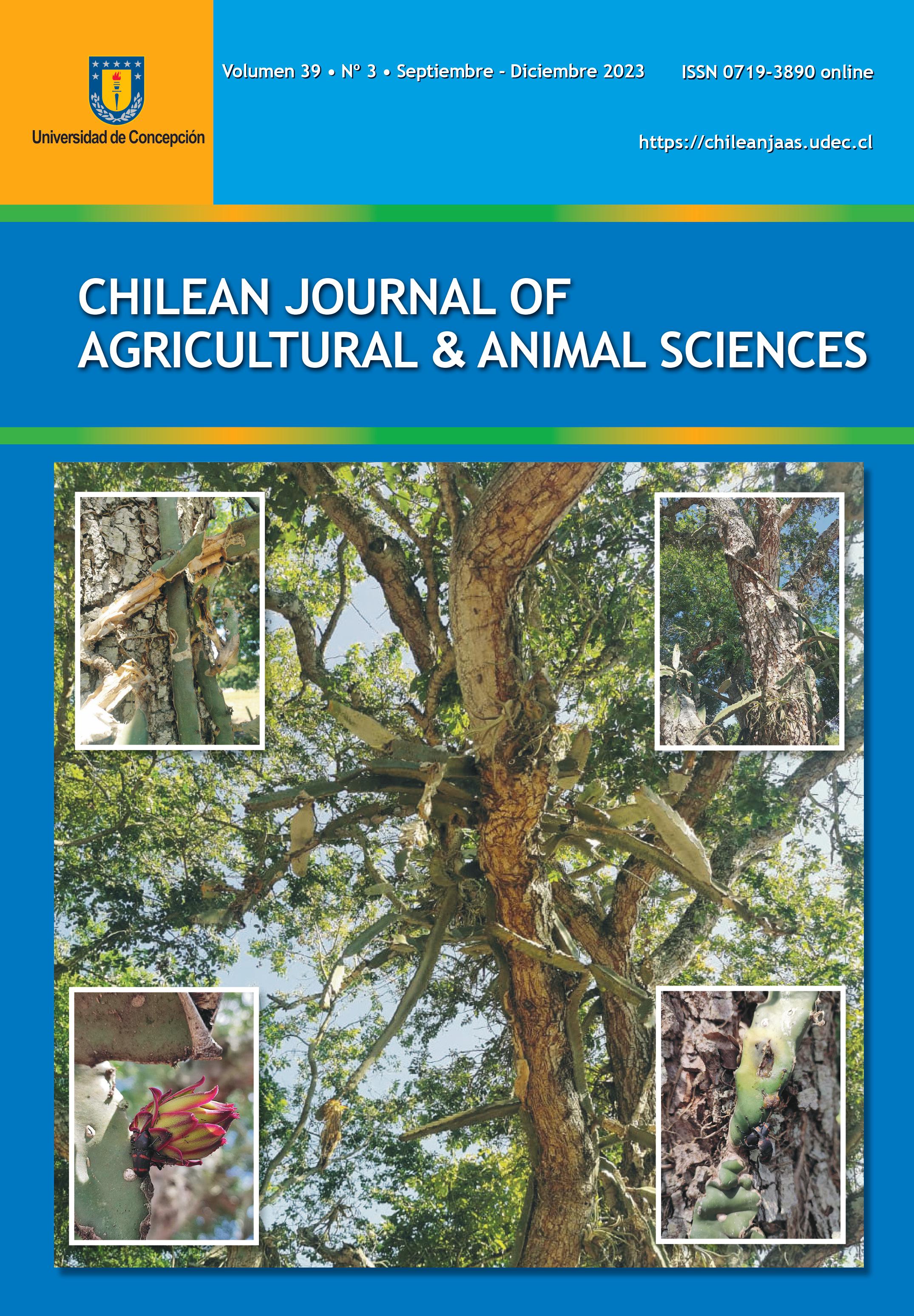ENZYMES FROM Pleurotus ostreatus SPENT SUBSTRATE USED FOR FATTENING RABBITS: EFFECTS ON PRODUCTIVE PERFORMANCE, CARCASS TRAITS AND MEAT CHARACTERISTICS
DOI:
https://doi.org/10.29393/CHJAA39-31EFDS60031Palabras clave:
edible fungi, laccases, meat characteristics, carcass traitResumen
Rabbit meat has a high nutritional value. The cost of rabbit feed is high, and thus it is important to find alternative feed sources with reduced costs. The objective was to evaluate the effects of enzymes obtained from the spent substrate of Pleurotus ostreatus on carcass traits and meat characteristics of fattening rabbits in order to recommend an alternative additive for rabbit feed. Spent substrate of P. ostreatus with different levels of enzymatic activity was used to feed growing rabbits. Ninety-sixty rabbits were selected and randomly distributed to four treatments: 0 (control without enzyme extract, C); 20000 (T20); 40000 (T40); and 60000 (T60) IU kg-1 of laccase enzymes from the spent substrate of P. ostreatus. The experiment included six repetitions (four animals each) per treatment. Rabbits were fattened over 28 d and productive performance parameters were determined. Then, the animals were slaughtered, and carcass traits and meat characteristics were measured. The results indicated that total weight gain, total feed consumption, total daily weight gain, hot carcass weight, and dressing percentage decreased (p<0.05) as the amount of enzyme increased. However, the T40 treatment was similar to the control (p>0.05) for carcass traits, texture and pH, although L*, cooking loss and hardness recorded higher values (p<0.05). In conclusion, the spent substrate of P. ostreatus can be used to feed rabbits as some parameters of productive performance and carcass traits were similar to the control treatment.
Descargas
Publicado
Cómo citar
Número
Sección
Derechos de autor 2023 Darinka Miroslava Saavedra-Castillo, Maricela Ayala Martínez, Javier Piloni-Martini, Aurora Quintero-Lira, Sergio Soto-Simental

Esta obra está bajo una licencia internacional Creative Commons Atribución 4.0.







